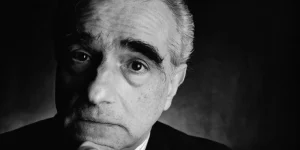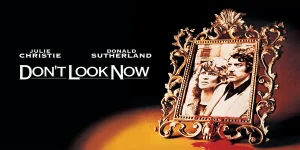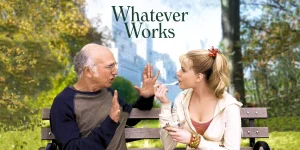Michelangelo Antonioni’s Blow-Up (1966) is one of the most iconic films of the 1960s, blending mystery, art, fashion, and philosophy into a surreal meditation on perception and reality. It remains a landmark in cinema for its enigmatic storytelling and haunting ending.
Table of Contents
ToggleDetailed Summary
The Life of Thomas
The film follows Thomas, a London fashion photographer (played by David Hemmings). At first, we see him navigating a day in the life of 1960s “Swinging London”: photographing models, interacting with artists, and wandering into seemingly random encounters. He is restless, cynical, and constantly seeking something to stimulate his senses.
The Park Encounter
During one of his strolls through a park, Thomas secretly photographs a couple in what looks like an intimate moment. The woman (played by Vanessa Redgrave) quickly notices him and confronts him, demanding the negatives. Intrigued, Thomas refuses at first, sensing there’s something unusual about the encounter.
The Enlargements and the Discovery
Back in his studio, Thomas develops the photos. As he enlarges them—hence the title Blow-Up—he notices something strange in the background. A figure seems to be holding a gun, and another enlargement suggests that there might be a body lying in the grass. His photographs appear to have captured a possible murder in progress.
The Vanishing Evidence
Obsessed, Thomas returns to the park at night and indeed finds what looks like a dead body lying there. But when he tries to gather evidence later, everything vanishes. The photos are stolen, the negatives gone, and when he revisits the park, the body is no longer there. His grasp on reality begins to unravel.
Movie Ending
In the film’s final sequence, Thomas encounters a group of young people playing an impromptu tennis match with imaginary rackets and a nonexistent ball. They mime the game with complete conviction. Eventually, the ball “goes out of play” and rolls toward Thomas. After hesitating, he picks up the invisible ball and throws it back into the match.
The camera pulls away from Thomas as he stands alone in the grass field, now small and insignificant. In the very last shot, he literally disappears from the frame, fading into nothingness.
The ending is often interpreted as Antonioni’s statement on the fragility of reality, the illusory nature of perception, and the artist’s role in constructing meaning. Did Thomas really see a murder? Was it all a hallucination? The film refuses to answer, leaving viewers in a state of uncertainty.
Are There Post-Credits Scenes?
No. Blow-Up does not include any post-credits scenes. The disappearance of Thomas at the end is the definitive final image of the film.
Type of Movie
Blow-Up is a psychological thriller, mystery, and art film. It is also considered part of the modernist cinema movement of the 1960s, emphasizing ambiguity, alienation, and visual storytelling over traditional plot resolution.
Cast
- David Hemmings as Thomas
- Vanessa Redgrave as Jane
- Sarah Miles as Patricia
- John Castle as Bill
- Jane Birkin as Model
- Veruschka as Herself (a real-life fashion model)
Film Music and Composer
The score was composed by Herbie Hancock, who brought a jazz-infused sound that matches the film’s urban, cool, and disjointed atmosphere. There is also a famous scene featuring the Yardbirds, with Jeff Beck and Jimmy Page, performing “Stroll On.”
Filming Locations
The movie was shot primarily in London, particularly:
- Maryon Park, Charlton – the crucial park scenes with the photographs and supposed murder.
- Stockwell and central London studios – for the fashion and photography sequences.
These locations are essential because they capture the essence of Swinging London, the cultural epicenter of the 1960s, juxtaposed with the eerie emptiness of the park.
Awards and Nominations
- Won the Palme d’Or at the Cannes Film Festival (1967).
- Nominated for two Academy Awards: Best Director (Antonioni) and Best Original Screenplay.
- Widely praised by critics and still frequently listed among the greatest films ever made.
Behind the Scenes Insights
- Antonioni was fascinated by the idea of photography as a way of both revealing and obscuring reality.
- The Yardbirds scene was partly improvised, with Jeff Beck famously smashing his guitar—a rare captured moment that went on to become iconic.
- David Hemmings was relatively unknown before this role, but Blow-Up made him a star.
- Antonioni had a reputation for being meticulous; he reportedly directed models’ every movement to achieve his desired visual compositions.
Inspirations and References
- Inspired by the short story “Las babas del diablo” (“The Devil’s Drool”) by Julio Cortázar.
- Also draws from the real-life “murder mystery” aura of 1960s London, with themes of voyeurism and counterculture.
Alternate Endings and Deleted Scenes
There are no confirmed alternate endings. Antonioni was very deliberate in his storytelling, and the final vanishing of Thomas was integral to the film’s message. Some minor deleted scenes have been mentioned in film scholarship, but nothing that alters the narrative direction.
Book Adaptations and Differences
The film is loosely based on Cortázar’s story, but Antonioni changes the details significantly. In the story, the photographer is in Paris, and the ambiguity is even stronger, with a heavier focus on language and perception. Antonioni translated those ideas into a visual medium, expanding them into the London counterculture.
Memorable Scenes and Quotes
Key Scenes
- Thomas photographing Veruschka in an intense fashion shoot.
- The sequence of enlarging photographs in the studio until they become abstract.
- The discovery of the “body” in the park.
- The Yardbirds rock performance and the crowd’s frenzy over a smashed guitar.
- The final mimed tennis match.
Iconic Quotes
- “Nothing like a little disaster for sorting things out.”
- “They are great—they live, they breathe!” (Thomas, while photographing models).
- “You don’t even see things when they’re right in front of you.”
Easter Eggs and Hidden Details
- The Yardbirds scene foreshadows the “invisible tennis” finale: both question what is real and what is performance.
- Antonioni deliberately leaves background objects slightly out of focus in many scenes, hinting that perception is selective and flawed.
- The park becomes emptier and eerier each time Thomas returns—symbolizing reality slipping away.
Trivia
- The film helped popularize the Swinging London image internationally.
- Vanessa Redgrave initially didn’t want the role but changed her mind after reading Antonioni’s script.
- The guitar neck smashed by Jeff Beck in the Yardbirds scene was later taken by a real audience member as a souvenir.
- The movie was initially controversial due to nudity and its ambiguous moral tone.
Why Watch?
Watch Blow-Up if you’re fascinated by films that challenge perception, blur the lines between reality and illusion, and refuse to hand you neat answers. It’s both a snapshot of 1960s culture and a timeless philosophical riddle wrapped in stylish cinematography.
Director’s Other Movies
- L’Avventura (1960)
- La Notte (1961)
- L’Eclisse (1962)
- Zabriskie Point (1970)
- The Passenger (1975)
Recommended Films for Fans
- The Conversation (1974)
- Blow Out (1981)
- Persona (1966)
- Repulsion (1965)
- Mulholland Drive (2001)













